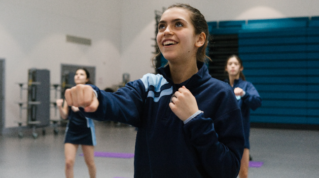In the first of a three-part series on bridging Covid-related learning gaps, Phil Roberts, Director from SIMS at ParentPay Group examines which children need the most support.
It’s hard to believe that it is over three and half years since schools shut their doors to most of their pupils when Covid first hit. The memories of that period for some of us are thankfully starting to fade but according to our data, the impact on learning has not.

We surveyed 500 school leaders for our recent Generation Catch-Up Report and found that 96% felt learning gaps were still having an impact on pupil achievement in their schools.
Nearly two thirds of those we spoke to (61%) described the impact as major with many noting its significant effects on pupils’ skills, knowledge and wellbeing.
Youngest school pupils are suffering the most
To form a more accurate picture of the state of play, we asked school leaders whether they had noticed if any particular year groups seem to be feeling the impact more than others.
The year group reported to be worst affected by the pandemic in primary schools were current Year 4s – those who were in reception when Covid-19 closed schools to most pupils and in Year 3 at the time of our data collection.
“These children have certainly felt the impact,” says Donna Faley, headteacher of St Thomas More Catholic Primary. “In fact, children right from Year 4 down to Year 1 are much more affected by learning gaps than the older children who already had those early reading skills in place before the pandemic.
“Children [who] were in reception and nursery missed out on developing key skills due to lockdowns and Covid bubble closures and this means they don’t have the solid foundations for learning.”
The impact in secondary schools
In secondary schools the gaps were more evenly felt but the greatest concern was reported for current Year 10s.
These children were in Year 6 at the start of the pandemic and went through transition to secondary school in September 2020. They faced serious disruption at a crucial stage in their education and are still suffering now, at a critical point in GCSE preparation.
But it’s not just the older children causing concern in secondary schools. The basic skills missed at primary school means many are having to fill gaps in Years 7 and 8 to ensure children progress.
“Many of the Year 7s join us with low levels of literacy and numeracy and some have reading ages of 4 or 5,” says Chris Kitchen, assistant head of Ysgol Aberconwy Secondary.
How far behind are pupils?
We were keen to understand how big the gaps were and so asked senior leaders to quantify this. Over two thirds (70%) reported between half to one academic year of learning had been lost in their schools, with one in 10 reporting learning loss of between one and two years. It will take time, patience and expertise to get all pupils back on track.
“Children might need to go right through the education system to fill their learning gaps,” says Ieuan Price, director of digital learning at St Illtyd’s Catholic High School.
Targeted interventions
Although the findings are worrying for parents and school leaders, much progress has been made in the last year or so. Schools have become far better at understanding where the gaps in children’s learning are, and are working hard to address them, with targeted interventions to help younger children develop the skills they missed and provide additional support for the cohort currently preparing for GCSEs.
In the next two articles in this series, we will explore the innovative strategies schools have shared with us to get their pupils back on track.
To see our data in full or examine the insight and gap-closing strategies from school leaders, download a complimentary copy of the Generation Catch-Up Report.









Your thoughts